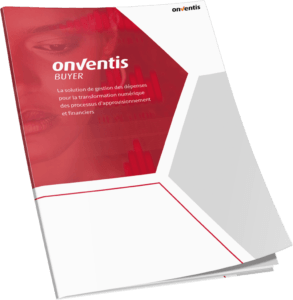The Advantages of a Spend Analysis
Spend Analysis is a valuable tool in the procurement process for analyzing and evaluating a company’s expenditures. The focus is on recording cash flow, the amount of expenditure and what this expenditure was spent on. The primary goals are to identify potential savings and uncover possible risks. Read here how spend analysis tools optimize your purchasing.

Spend Analysis SOftware in Detail: How Spend Analysis Optimizes Your Business Processes
Spend analysis is a valuable tool in the procurement process for analyzing and evaluating a company’s expenditures. The focus is on capturing cash flow, the amount of spend, and what that spend was for. The primary goals are to identify potential savings and uncover possible risks.
Spend analysis software collects fundamental information on procurement data, from which insights and optimization potential are derived. Long-term spending trends are monitored by analyzing spending patterns and historical purchasing behavior. This analysis provides valuable information that can be used for cost savings and enables informed procurement decisions. Fundamental questions are answered to support these reasoned decisions:
- What are the company’s most important purchasing categories?
- Which categories account for the highest proportion of spending? What are the spending trends?
- What is the total spend by cost center in the company?
- Which suppliers are most widely sourced? Are there any preferred vendors?
By answering these questions, the company gains valuable insights into the targeted control of expenditures and, consequently, an efficient definition of its procurement strategy. Spend analysis provides a deep dive into a company’s financial situation and lays the foundation for optimized procurement and cost reduction.
The Concrete Advantages of Spend Analysis in Procurement
The advantages of the spend analysis in the procurement process are not limited to the cost savings mentioned before but offer optimizations in the entire purchase process. The fundamental benefit is the overview of the expenditures, from which further advantages result.
Full Transparency
Spend analysis enables comprehensive transparency across all of a company’s expenses. It provides insights into spend patterns and uncovers the potential for improvement and optimization. By breaking down purchases to the item level, precise data analysis is possible, providing accurate insights into spending patterns. This allows a company to see which products or services account for the largest share of spend. This granular information also helps monitor cost structures and historical purchasing behavior to control long-term spend.
However, spend analysis doesn’t consider cost centers and individual items as data sources – it also incorporates information about suppliers. Data is collected that provides insight into preferred suppliers, their reliability, and the amount of spend with specific suppliers. This comprehensive view provides a solid foundation for supplier selection and evaluation.
Spend analysis creates visibility across the entire procurement process at both the product and supplier levels. This gives purchasing organizations an expanded view of their spend, providing valuable support for strategic decision-making and helping them take data-driven action.
Risk Management
With the transparency that has been created, hidden risks in the company’s procurement process are uncovered. This is achieved by controlling and monitoring spend against contracts, policies, and regulations to ensure compliance. It applies to both internal purchasing processes and collaboration with suppliers. Spend analysis can identify potential risks early so buyers can use the results of the evaluation to guide and involve them in the decision-making process. Spend analysis consequently provides the necessary basis for proactively minimizing risks by ensuring compliance both internally and in collaboration with suppliers.
Supplier Monitoring
As mentioned, transparency in the procurement process enables more effective monitoring of supplier performance. Reliability and dependence on the supplier are evaluated, and how much is purchased from each supplier. This supplier monitoring plays an important role in the future planning of procurement activities since the data from the analysis can be used during the supplier selection process.
Another benefit of spend analysis is the strengthening of supplier relationships. It collects data and insights that can provide information about these relationships. Answers can be found regarding which suppliers add the greatest value and which cooperations are particularly promising. With this foundation, the buyer can focus on specific suppliers and thus strengthen supplier relationships. In addition, risks and the number of suppliers can be analyzed to achieve better negotiating conditions and to expand and diversify the supplier base.
Reduce Costs
Of course, cost savings must be included in this list of benefits – they are at the heart of spend analysis, along with increased transparency. A central goal of procurement is to lower costs without negatively impacting processes. With the help of a Spend Analysis, buyers can achieve this very objective: It identifies areas of excessive spending, enables consolidation of purchases, and reveals potential for negotiations with suppliers to improve prices and contract terms. The evaluation of procurement data identifies targeted potential for cost savings.
In addition, a spend analysis simultaneously enables a precise evaluation of expenditures and a review of internal compliance. Specifically, it examines the extent to which the company’s employees procure in accordance with purchasing guidelines. It is determined whether there are deviations that require measures to reduce the so-called “maverick buying” quota. In addition, item-level analysis identifies whether there are duplicate purchases or if excessive spending is being incurred on certain goods or services. As a result, it is possible to identify errors, irregularities, and fraud. At the same time, it enables effective control and monitoring of procurement activities to avoid unnecessary costs.
Transparency in supplier management provides a solid foundation for contract negotiations with suppliers based on sound information and insights from the analysis. Consequently, companies can make better-informed decisions and negotiate more successful contract terms. As a result, companies can achieve better agreements, such as more favorable prices, longer contract terms, or improved conditions. Ultimately, the result is cost savings at the supplier level.
Budget planning and control are also simplified when there is a comprehensive overview of a company’s expenses. Spend Analysis provides detailed information on past purchasing patterns, enabling companies to forecast better spending and allocate resources more efficiently.
These measures and insights enable procurement cost savings while helping to improve financial performance. Companies optimize spend and move closer to their critical procurement goal.
Spend Analysis in Action
Spend Analysis offers companies a variety of benefits that are connected and lead to improved overall performance. It achieves comprehensive visibility, supports risk management, improves supplier relationships, and identifies savings opportunities. These benefits provide a strong foundation for data-driven decision-making and efficient spend management to enhance financial performance and ensure long-term success.
Weitere BlogsMore BlogsMeer blogs




